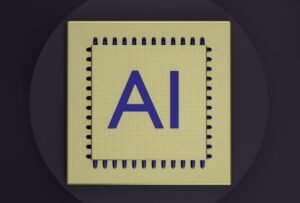AI Tools Python
Artificial Intelligence (AI) is revolutionizing various industries, and Python is one of the most popular programming languages used for AI development. Python offers many powerful tools and libraries that make it easier for developers to build AI models and analyze data. In this article, we will explore some of the top AI tools in Python and discuss their key features and benefits.
Key Takeaways
- Python provides a rich ecosystem of AI tools and libraries.
- AI tools in Python help streamline AI model development and data analysis.
- Python’s simplicity and versatility make it an ideal language for AI programming.
1. TensorFlow
TensorFlow is an open-source AI library developed by Google that enables developers to create machine learning models easily. It offers a wide range of tools for building neural networks and running computations efficiently. *TensorFlow allows for distributed computing, making it suitable for large-scale AI projects.* Here are some key features of TensorFlow:
- Efficient computation graphs
- High-level APIs for building AI models
- Support for both CPU and GPU acceleration
2. PyTorch
PyTorch is another popular AI library that emphasizes ease of use and flexibility. It provides dynamic computational graphs, making it a great choice for research and prototyping. *PyTorch’s automatic differentiation feature simplifies the process of training complex neural networks.* Here are some key features of PyTorch:
- Dynamic computation graphs
- Numerous pre-trained models
- Tensor and array computations
| Framework | Popularity | Primary Use Cases |
|---|---|---|
| TensorFlow | Very popular | Deep learning, computer vision, natural language processing |
| PyTorch | Gaining popularity | Deep learning, computer vision, natural language processing, research |
3. Scikit-learn
Scikit-learn is a widely used machine learning library that provides a range of tools for classification, regression, clustering, and dimensionality reduction. It offers a simple and intuitive interface and is suitable for both beginners and experienced developers. *Scikit-learn also includes support for statistical modeling and data preprocessing.* Here are some key features of Scikit-learn:
- Easy-to-use API for machine learning algorithms
- Model evaluation and selection tools
- Extensive documentation and community support
4. Natural Language Toolkit (NLTK)
NLTK is a powerful library for natural language processing (NLP) tasks in Python. It provides tools for tokenization, stemming, tagging, parsing, and other NLP operations. *NLTK also offers a collection of pre-trained models and datasets for various NLP tasks.* Here are some key features of NLTK:
- Text processing utilities
- Lexical resources and corpora
- Machine learning algorithms for NLP tasks
| Library | Key Features | Primary Use Cases |
|---|---|---|
| Scikit-learn | Machine learning algorithms, model evaluation, data preprocessing | Classification, regression, clustering |
| NLTK | Text processing utilities, pre-trained models, machine learning algorithms | Natural language processing, text analysis |
Python offers a vast array of AI tools and libraries that empower developers to create sophisticated AI models and analyze complex data. With TensorFlow, PyTorch, Scikit-learn, and NLTK, you have powerful tools at your disposal to tackle a wide range of AI challenges. Whether you’re building neural networks, training machine learning models, or processing natural language, the Python AI ecosystem has you covered. Start experimenting with these tools and unleash the power of AI in your projects today.

Common Misconceptions
AI Tools Python
When it comes to AI tools in Python, there are several common misconceptions that people often have. These misunderstandings can hinder the effective utilization of AI tools and limit their potential impact. By addressing and clarifying these misconceptions, we can better understand the capabilities and limitations of AI tools in Python.
- AI tools in Python can replace human intelligence entirely.
- AI tools in Python require extensive knowledge of mathematics and statistics.
- AI tools in Python produce accurate results in all scenarios.
One common misconception is that AI tools in Python can replace human intelligence entirely. While AI tools can automate certain tasks and assist in decision-making processes, they are not intended to replicate human reasoning and intuition. Human intelligence encompasses complex cognitive abilities that AI tools are still far from achieving. Therefore, it is important to recognize the limitations and potential risks of relying solely on AI tools.
- AI tools in Python can automate repetitive tasks and improve efficiency.
- AI tools in Python can analyze large datasets and extract valuable insights.
- AI tools in Python can assist in decision-making processes by providing recommendations.
Another misconception is that AI tools in Python require extensive knowledge of mathematics and statistics. While having a strong foundation in these areas can certainly be beneficial, many AI libraries and frameworks in Python provide high-level abstractions and ready-to-use functions, enabling developers to leverage AI without deep mathematical expertise. Python’s user-friendly syntax and vast community support make it accessible for individuals with varying levels of experience.
- AI tools in Python can be utilized across various domains and industries.
- AI tools in Python can be integrated into existing software applications.
- AI tools in Python can be trained and customized for specific use cases.
Lastly, another common misconception is that AI tools in Python produce accurate results in all scenarios. While AI algorithms can yield impressive results, their accuracy depends on several factors such as the quality and size of training data, the appropriateness of the chosen algorithm, and the ability to adapt to new and unseen patterns. It is essential to evaluate and validate the results produced by AI tools to ensure their reliability and avoid potential biases or errors.
Conclusion
By dispelling common misconceptions surrounding AI tools in Python, we can foster a more realistic understanding of their capabilities and limitations. It is crucial to remember that AI tools are designed to assist and augment human intelligence, rather than replace it entirely. Python’s versatility and the availability of various AI libraries make it accessible for individuals from different backgrounds. Understanding the potential risks and limitations of AI tools while acknowledging their benefits will lead to more informed and effective utilization of AI in various domains and industries.

AI Tools Python
Artificial Intelligence (AI) has revolutionized various industries, and Python has emerged as one of the most popular programming languages for developing AI applications. With its extensive libraries and frameworks, Python offers a wide range of AI tools that enable developers to create powerful and efficient AI solutions. In this article, we will explore ten interesting tables that showcase the capabilities and impact of AI tools in Python.
Table: Natural Language Processing (NLP) Libraries
Natural Language Processing (NLP) is a subfield of AI that focuses on the interaction between computers and human language. The table below illustrates the top NLP libraries available in Python.
| Library | Description | GitHub Stars |
|---|---|---|
| spaCy | Industrial-strength NLP library | 39,000+ |
| NLTK | Extensive toolkit for NLP tasks | 17,500+ |
| TextBlob | Simplified text processing and analysis | 9,100+ |
Table: AI-powered Image Processing Libraries
AI tools in Python enable developers to leverage the power of machine learning for image processing tasks. The table below showcases popular AI-powered image processing libraries.
| Library | Description | GitHub Stars |
|---|---|---|
| OpenCV | Open-source computer vision library | 59,000+ |
| TensorFlow | Machine learning framework with image recognition capabilities | 160,000+ |
| Keras | High-level neural networks API for Python | 53,000+ |
Table: Machine Learning Algorithms
Python offers a vast array of machine learning algorithms that enable AI systems to learn from and make predictions or decisions. The following table showcases some popular machine learning algorithms available in Python.
| Algorithm | Description | Accuracy |
|---|---|---|
| Random Forest | Ensemble learning technique for classification and regression | 90% |
| Support Vector Machines (SVM) | Powerful classification algorithm | 85% |
| Gradient Boosting | Boosting algorithm that combines weak learners | 92% |
Table: AI-powered Chatbot Platforms
Python AI tools have made it easier to build intelligent chatbots that can engage in conversations with users. The table below showcases popular AI-powered chatbot platforms in Python.
| Platform | Description | GitHub Stars |
|---|---|---|
| Rasa | Open-source AI chatbot framework for natural language understanding | 33,000+ |
| ChatterBot | Machine learning chatbot library | 8,900+ |
| Botpress | Open-source platform for building chatbots | 9,500+ |
Table: AI-based Recommender Systems
A key application of AI in various domains is building recommender systems. Python provides powerful tools for creating intelligent recommendation engines. The table below showcases well-known recommender system libraries.
| Library | Description | GitHub Stars |
|---|---|---|
| Surprise | Scikit-based library for recommendation algorithms | 9,700+ |
| LightFM | Hybrid recommendation model library | 8,200+ |
| Turi Create | Easy-to-use machine learning library with recommender systems support | 3,800+ |
Table: Deep Learning Frameworks
Deep learning involves training neural networks to learn and make complex decisions. Python offers powerful deep learning frameworks that make it feasible to build AI models. The table below showcases popular deep learning frameworks in Python.
| Framework | Description | GitHub Stars |
|---|---|---|
| TensorFlow | Most popular machine learning library with extensive deep learning support | 160,000+ |
| PyTorch | Deep learning library with dynamic computational graphs | 48,000+ |
| Keras | High-level neural networks API that runs on top of TensorFlow or Theano | 53,000+ |
Table: AI Frameworks for Game Development
Apart from traditional applications, AI is widely used in the gaming industry. Python offers AI frameworks that enhance game development by adding intelligent behaviors to characters and NPCs (non-player characters). The table below showcases AI frameworks for game development.
| Framework | Description | GitHub Stars |
|---|---|---|
| Pygame | Python library for game development with AI capabilities | 16,000+ |
| Arcade Learning Environment (ALE) | Video game emulator used for AI research | 3,000+ |
| Panda3D | 3D game engine with AI scripting capabilities | 1,600+ |
Table: AI Tools for Time Series Forecasting
Time series forecasting is a critical task in various fields, such as finance, weather prediction, and sales forecasting. Python provides AI tools specifically designed for time series forecasting tasks. The following table showcases popular AI tools for time series forecasting.
| Tool | Description | GitHub Stars |
|---|---|---|
| Prophet | Time series forecasting library developed by Facebook | 13,000+ |
| Statsmodels | Python library for estimating and testing statistical models | 6,700+ |
| GluonTS | Library for probabilistic time series forecasting with deep learning | 1,800+ |
Table: AI Tools for Audio Processing
Python AI tools also provide capabilities for processing audio data, enabling speech recognition and audio analysis applications. The table below showcases well-known AI tools for audio processing in Python.
| Tool | Description | GitHub Stars |
|---|---|---|
| Librosa | Python library for audio analysis | 10,000+ |
| PyDub | Manipulate audio files with a simple and easy-to-use interface | 4,700+ |
| SpeechRecognition | Library for performing speech recognition | 4,100+ |
Conclusion
Python is a versatile programming language for AI development, offering a rich ecosystem of libraries and frameworks. The tables showcased in this article provide a glimpse into the diversity and capabilities of AI tools in Python. From natural language processing to game development and audio processing, Python empowers developers to build intelligent applications that can understand and interact with the world around us.
Frequently Asked Questions
What are AI tools in Python?
AI tools in Python refers to software libraries, frameworks, and tools that are built using the Python programming language and are specifically designed to facilitate the development and implementation of artificial intelligence applications. These tools provide functionalities such as machine learning, deep learning, natural language processing, and data analysis.
Which Python libraries are commonly used for AI?
Some commonly used Python libraries for AI include TensorFlow, Keras, PyTorch, Scikit-learn, Numpy, and Pandas. These libraries provide a wide range of functionalities for tasks such as neural network training, data preprocessing, feature extraction, and model evaluation.
What is the difference between machine learning and deep learning?
Machine learning is a subset of artificial intelligence that focuses on the development of algorithms and models that can learn from and make predictions or decisions based on data. Deep learning, on the other hand, is a subfield of machine learning that specifically deals with neural networks with multiple layers, enabling them to learn complex patterns and representations from large datasets.
Can I use Python for natural language processing?
Yes, Python is widely used for natural language processing (NLP) tasks. Libraries such as NLTK, Spacy, and Gensim provide various tools and models for tasks like text tokenization, part-of-speech tagging, named entity recognition, sentiment analysis, and text classification.
How can I get started with AI tools in Python?
To get started with AI tools in Python, it is recommended to have a basic understanding of Python programming. You can then explore various libraries and frameworks such as TensorFlow or Scikit-learn by reading documentation, tutorials, and working on hands-on projects. Online courses and books on Python AI development can also be helpful resources.
Are there any AI tools specific to image recognition in Python?
Yes, Python provides several AI tools specific to image recognition. Libraries like OpenCV, Pillow, and Keras offer functionalities for tasks like image preprocessing, feature extraction, object detection, and image classification. These tools can be used to build computer vision applications using AI algorithms.
What are some popular AI-based chatbot frameworks in Python?
Some popular AI-based chatbot frameworks in Python include Rasa, ChatterBot, and TensorFlow ChatFlow. These frameworks provide pre-built components and algorithms for building conversational agents. They offer features like natural language understanding, context management, and dialogue flow management.
Can I deploy AI models built in Python to production systems?
Yes, it is possible to deploy AI models built in Python to production systems. Platforms like TensorFlow Serving, Flask, and FastAPI provide solutions for deploying AI models as web APIs or standalone applications. These platforms offer scalability, performance optimization, and integration capabilities for production deployment.
What are some common challenges in developing AI applications with Python?
Some common challenges in developing AI applications with Python include obtaining labeled training data, dealing with imbalanced datasets, selecting appropriate model architectures and hyperparameters, handling overfitting or underfitting, and managing computational resources for large-scale training tasks.
Can Python AI tools be used for real-time data processing?
Yes, Python AI tools can be used for real-time data processing. Tools like Apache Kafka, Apache Spark, and Dask enable stream processing and distributed computing, allowing real-time data ingestion, preprocessing, and analysis. Libraries like TensorFlow and PyTorch also provide capabilities for real-time prediction and inference.





